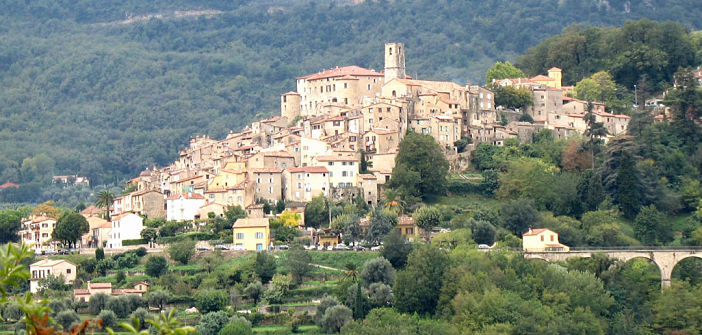Dominated by the 1310 meters of Montet, Le Bar sur Loup is located at an altitude of 300 meters. The area has been inhabited since the Neolithic period. Remains near the Pilon cliff and a Roman oppidum on its crest testify to human presence in ancient times. Closer to the present day, we refer to Albarnum in 1078.
In 1235, the castrum of Albarno is mentioned in a deed of exchange between the Count of Provence and the Lord of Antibes. It is during this period that the castle, owned by the Grasse family until the revolution, was constructed. The designation “Bar” only appears in the 16th century.
The parish church of Saint James the Greater dates from the 15th century. In 1471, King René exempted the village from the Taille tax to allow for the construction of a religious building to replace the old one that was destroyed. Originally with a single nave, it was enlarged at the end of the 17th century. The bell tower, demolished in 1831, was replaced by a tower in which a Roman funerary stela from the 3rd century was inserted at its base. This church houses two works of art: a Brea and the Danse Macabre.
Le Bar sur Loup is the birthplace of Admiral De Grasse, born in the castle in 1722. Two other notable figures lived in Le Bar: Célestin Freinet and the poet Francis Ponge.
While strolling through the streets of Le Bar, one should linger on the doors and their lintels. During the Ancien Regime and even at the beginning of the 19th century, faced with an illiterate population, merchants and artisans carved the symbol of their profession into the wood or stone.
With the development of the perfume industry in Grasse, Le Bar sur Loup turned towards the production of jasmine and orange blossom. Consequently, the village was given the nickname “City of Oranges”.
We leave this village with several options available, among them: following the Loup river and its crystalline song, or taking the Path of Paradise. If the Danse Macabre threatened us with the fires of hell, this path lifts us towards the heavens, God, and another village to discover.
Thierry Jan


